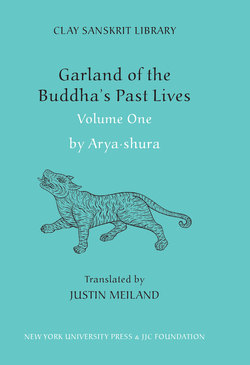Читать книгу Garland of the Buddha’s Past Lives (Volume 1) - Aryashura - Страница 31
На сайте Литреса книга снята с продажи.
Оглавление14See Basu (1988) for a literary analysis of the Jatakamala. See also Harn (2007), who lists examples of Hari·bhatta’s style. See gerow (1971) for a summary of literary devices in Indian literature.
15Dating the Jatakatthavannana is problematic since it developed within an oral culture. The verses are traditionally considered canonical and can be given a lower limit of the first century bce (although many must be earlier), whereas the prose is commentarial and has a lower limit of approximately the fifth century ce (although again much must date back far earlier).
There are major differences between the Jatakatthavannana and Jatakamala. The Jatakamala’s stories are not spoken by the Buddha and consequently do not have a frame-story set in the present, linking the Buddha’s life with the jataka. Arya·shura’s text usually identifies only the Buddha’s past life character, whereas the Jatakatthavannana often identifies the past life characters of others contemporary to the Buddha, including his chief monks and nuns, as well as his wife and child. Both texts agree in not portraying a chronological sequence of past lives. But whereas the Jatakatthavannana orders its stories according to their number of verses, the Jatakamala is ordered on thematic concerns.
It could be argued that the Jatakatthavannana’s mixture of verse and prose, often described as akhyana, provides a precedent for campu. In contrast to the Jatakamala, however, verses in akhyana literature often rely on the prose for their meaning to be understood. Campu literature is also more refined in literary expression and has no strict hierarchy of verse and prose.
16Khoroche (1989: 257ff.) provides a useful list of correspondences with the Jatakatthavannana and other texts at the beginning of his notes to each story.
17The comments in this section focus largely on stories 1–20 translated in the present volume. For comments on stories 21–34, please see the introduction to Volume Two.
